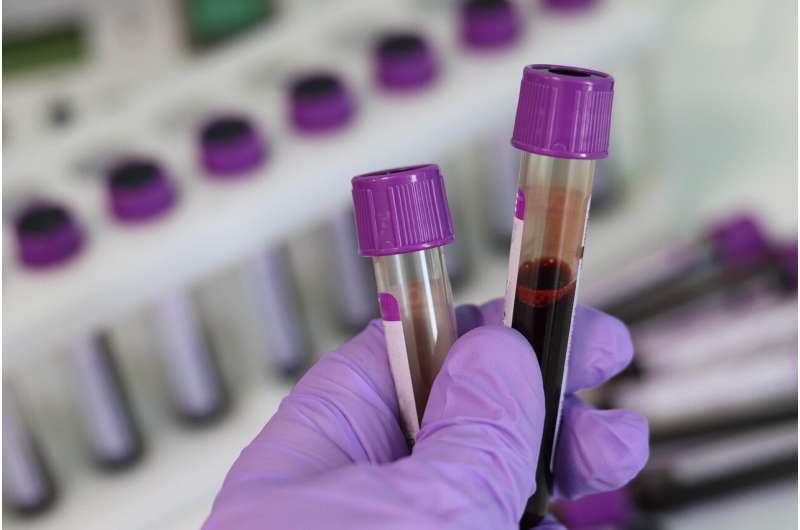
Research supported by the National Institutes of Health has found that measuring two types of fat in the bloodstream along with C-reactive protein (CRP), a marker of inflammation, can predict a woman’s risk for cardiovascular disease decades later. These findings, presented as late-breaking research at the European Society of Cardiology Congress 2024, were published in the New England Journal of Medicine.
“We can’t treat what we don’t measure, and we hope these findings move the field closer to identifying even earlier ways to detect and prevent heart disease,” said Paul M. Ridker, M.D., M.P.H., a study author and the director of the Center for Cardiovascular Disease Prevention at Brigham and Women’s Hospital, Boston.
For the study, investigators collected blood samples and medical information from 27,939 health care providers living in the United States who participated in the Women’s Health Study.
Women, who started the study between 1992–1995 at an average age of 55, were followed for 30 years. During this period, 3,662 study participants experienced a heart attack, stroke, surgery to restore circulation, or a cardiovascular-related death. Researchers assessed how high-sensitivity CRP, along with low-density lipoprotein (LDL) cholesterol and lipoprotein(a), or Lp(a), a lipid partly made of LDL, singularly and collectively predicted these events.
Participants were grouped into five categories—ranging from those with the highest to lowest levels—to measure each of the three markers. Researchers found that women with the highest levels of LDL cholesterol had a 36% increased associated risk for heart disease compared to those with the lowest levels. Those with the highest levels of Lp(a) had a 33% increased associated risk, and those with the highest levels of CRP had a 70% increased associated risk.
When all three measures—LDL cholesterol, Lp(a), and CRP—were assessed together, participants with the highest levels had more than a 1.5-times increased associated risk for stroke and more than a 3-times increased associated risk for coronary heart disease compared to women with the lowest levels.
The researchers note that while only women were assessed in this study, they would expect to find similar results in men.
“In recent years, we’ve learned more about how increased levels of inflammation can interact with lipids to compound cardiovascular disease risks,” said Ahmed A.K. Hasan, M.D., Ph.D., a medical officer and program director at the National Heart, Lung, and Blood Institute (NHLBI). “This helps explain why lower levels are often better.”
Immune cells, which help the body repair itself from wounds or infection, can also sense the accumulation of extra cholesterol in cells or become activated in response to the build-up of plaque and send out inflammatory signals. This creates a hyperinflammatory environment where plaque can form, become larger, or even rupture—and cause cardiovascular events.
To support optimal cardiovascular health, the researchers emphasize primary prevention. This includes getting regular physical activity, eating a heart-healthful diet, managing stress, and avoiding tobacco or quitting smoking. Other measures for people with increased risks may include using medication to lower cholesterol and/or reduce inflammation.
Researchers have also found that steps people take earlier in life to support their heart and vascular health can add up over time and correlate with better health outcomes years and even decades later.
LDL cholesterol, which is routinely measured by health care providers, can be treated with widely-available therapies, such as statins. However, standard Lp(a) and CRP screening recommendations can vary.
Some countries recommend screening for Lp(a) since elevated levels are often due to inherited risks. In areas without universal Lp(a) screenings, like the U.S., physicians can order tests for people with heart disease or who have a family history of it. Some therapies are available for those with elevated levels and researchers are testing new approaches to personalize and improve treatment options.
Testing for CRP also varies. Screening often depends on a person’s underlying risks or is up to the discretion of the provider. Colchicine, an anti-inflammatory therapy previously used for gout, was approved by the Food and Drug Administration in 2023 to offset risks for cardiovascular disease among people with atherosclerosis. Additional anti-inflammatory therapies and approaches are being studied.
More information:
Inflammation, Cholesterol, Lipoprotein(a), and 30-Year Cardiovascular Outcomes in Women, New England Journal of Medicine (2024). DOI: 10.1056/NEJMoa2405182
Citation:
Single blood test predicts 30-year cardiovascular disease risks for women (2024, August 31)
retrieved 1 September 2024
from https://medicalxpress.com/news/2024-08-blood-year-cardiovascular-disease-women.html
This document is subject to copyright. Apart from any fair dealing for the purpose of private study or research, no
part may be reproduced without the written permission. The content is provided for information purposes only.

